Eating well is not going to be a problem in Bulgaria. The country’s cuisine – a mix of Balkan, Turkish and Slavic influences – can appear meat-heavy at first, but on closer inspection it’s tasty, great value and healthy. Much importance is placed on the use of local ingredients, and a new generation of inventive young chefs is taking Bulgarian food to new places, often via modern twists of classic dishes. Even the smallest towns have at least one good restaurant, usually more, and service – notoriously bad until quite recently – has improved hugely. Prices remain cheap, although those who do want to splurge will find ample opportunity, particularly in Sofia.
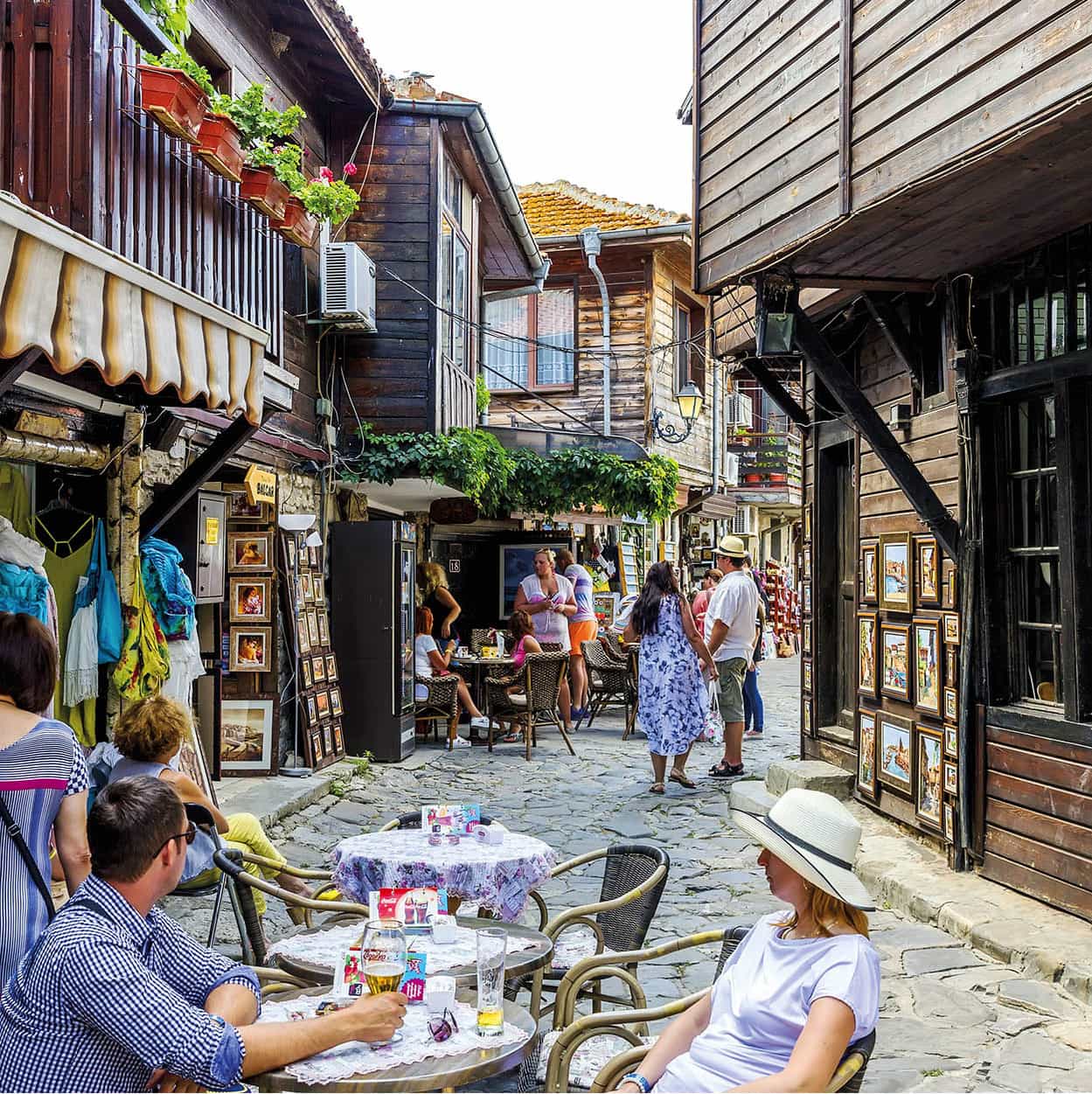
Café in Nessebar
Shutterstock
Vegetarians, long neglected, will have little problem finding a wide range of dishes, not least as the practice of observing Orthodox Lent – frowned on during the communist period – once again has many adherents. There are four periods of the year (not to mention every Wednesday and Friday) when the faithful refrain from eating meat, fish and dairy products, and restaurants have adapted menus to cater to this group.
Bulgarians tend to eat light breakfasts of sweet coffee with bread and yoghurt, followed by an early lunch of considerable proportions: at least two courses. Evening meals are taken late, around 8pm or even later. The main Easter meal is eaten after midnight mass on Saturday night. Such meals, especially in large families, can often go on all night.
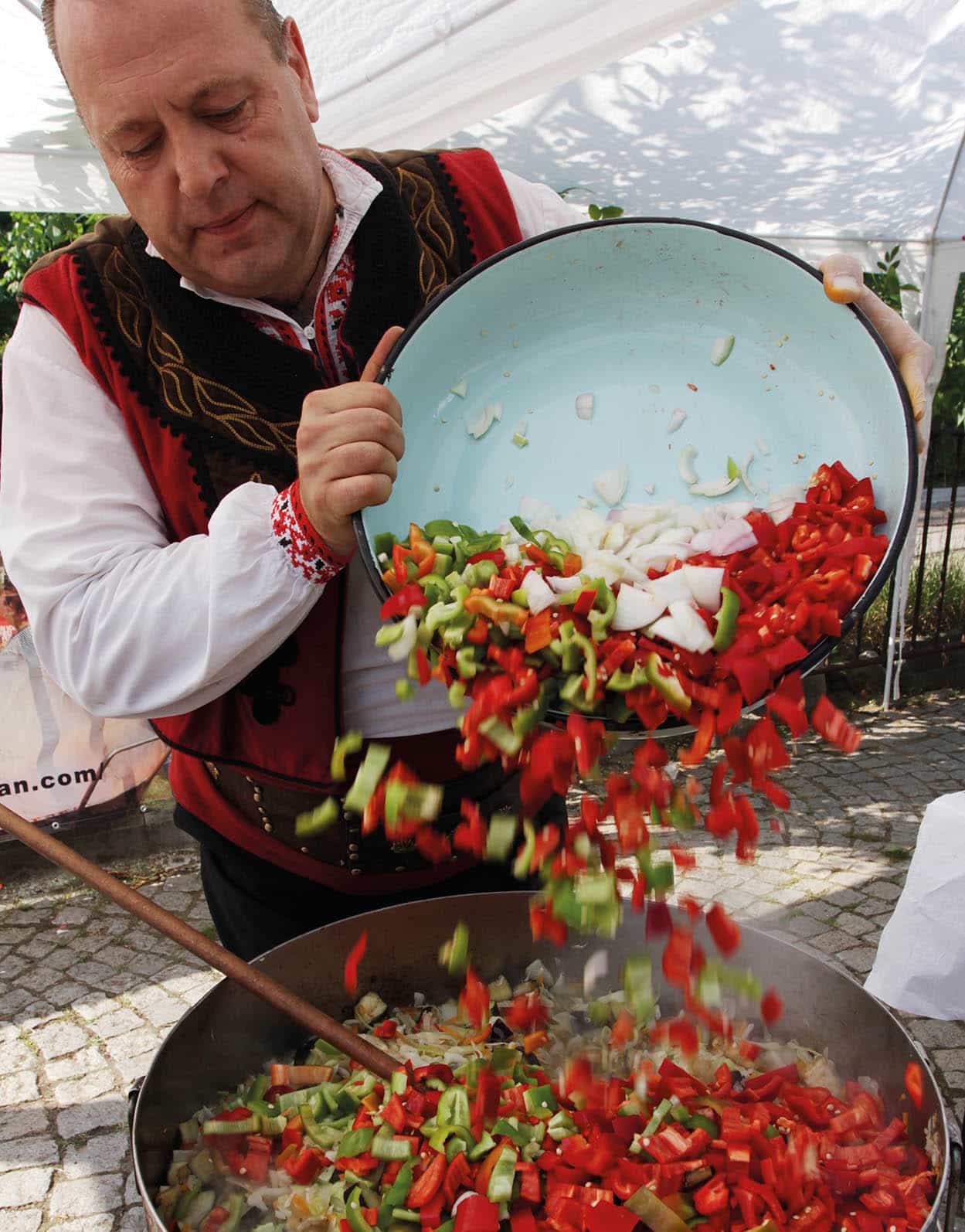
Local ingredients at a festival in Sofia
Shutterstock
Local Ingredients
The quality of pork (svinsko) is of the highest order throughout the Balkans, and Bulgaria is no exception. One of the main staples, it appears in any number of dishes. Chicken and veal are also popular and most other meats are readily available. Beef tends to be expensive and not always of the best quality.
Though Bulgaria has a not insignificant coastline, fish is not as available as it should be. Carp, trout and perch are the most popular local fish served in restaurants, and are usually grilled. Nessebur has the coast’s best selection of seafood restaurants. All along the coast you will find street vendors selling tsatsi, small, sardine-like fish fried in a rudimentary batter and covered in salt. They taste great. Black Sea mussels are small yet tasty, cheap and enormously popular.
Given the fact that Bulgarians claim to have invented yoghurt, known locally as kiselo mlyako, they make no bones about adding it, even if only a small amount, to almost any dish. If you are unsure about whether your food will come with yoghurt, ask: Mozhe li da prigotvite yastieto bes kiselo mlyako? Can you make this dish without yoghurt?
Bulgarian fruit and vegetables are of excellent quality, though strictly seasonal. Agriculture is slowly adopting Western techniques and practices, but most produce remains organic, and as a result tastes superb. Tomatoes especially have a flavour that long ago disappeared from the supermarkets of western Europe. Sweetcorn is popular in season (August and early September) and you will find street vendors selling boiled cobs all over the country. Melons, both water and honeydew, are fabulous and appear at the end of July. Prices are high at the beginning of the season, but by the end of September they are all but given away.
Bulgarian bread, which accompanies virtually every dish, is usually dusted with oil and served hot.
Yoghurt
Bulgarians invented yoghurt, or so they will tell you. Certainly, people in the region have made yoghurt throughout history to preserve milk, much in the same way as Northern Europeans have made cheese and butter. The earliest yoghurts were probably spontaneously fermented, perhaps by wild bacteria residing inside goatskin bags used for transport. It was originally produced exclusively on a domestic scale, using sheep’s milk. The word for yoghurt comes from the Turkish verb yogurtmak (to blend), but its active ingredient is called Lactobacillus bulgaricus, a fact that only supports the Bulgarian claim to have invented it.
Yoghurt remains a staple of the Bulgarian diet. It is often taken at breakfast, though it can be eaten, or drunk, at any time throughout the day. It is also used as an ingredient in many Bulgarian dishes, the most popular of which is the cold soup tarator.
Popular Dishes
Defining what is actually Bulgarian national cuisine, as opposed to what is merely Balkan, is difficult. Dishes that the Bulgarians claim as their own, such as shkembe chorba (tripe soup) or kashkaval pane (fried, breaded cheese) for instance, are just as likely to be found in Macedonia, Romania, Serbia and even Turkey. There are, of course, local variations that go beyond differences in spelling, and pure Bulgarian dishes include sirene po shopski (baked goat’s cheese) and kavarma (meat and vegetable stew, often very spicy). Other popular dishes include tarator (a thick cold yoghurt and cucumber soup, often served as a starter), kiopolou (roasted or grilled aubergines and peppers, often served covered in vinegar), kiuftete (meat balls, either pork or chicken, usually flattened out to look like hamburger patties), chuski biurek (fried or baked peppers stuffed with beans and cheese) and giuvech (a thick stew usually served in the pot it was cooked in, and a staple of all Bulgarian-cuisine restaurants).
When it comes to snacks, Bulgarians love savouries: you will see gevrek (a kind of bagel topped with salt) and banitsa (a light pastry filled with cheese) sold everywhere; they are best eaten piping hot. Semki (sunflower seeds) are eaten as though they were the last food in the world. Go to a football match in Bulgaria and by the end of the game you will be knee-deep in sunflower seed shells.
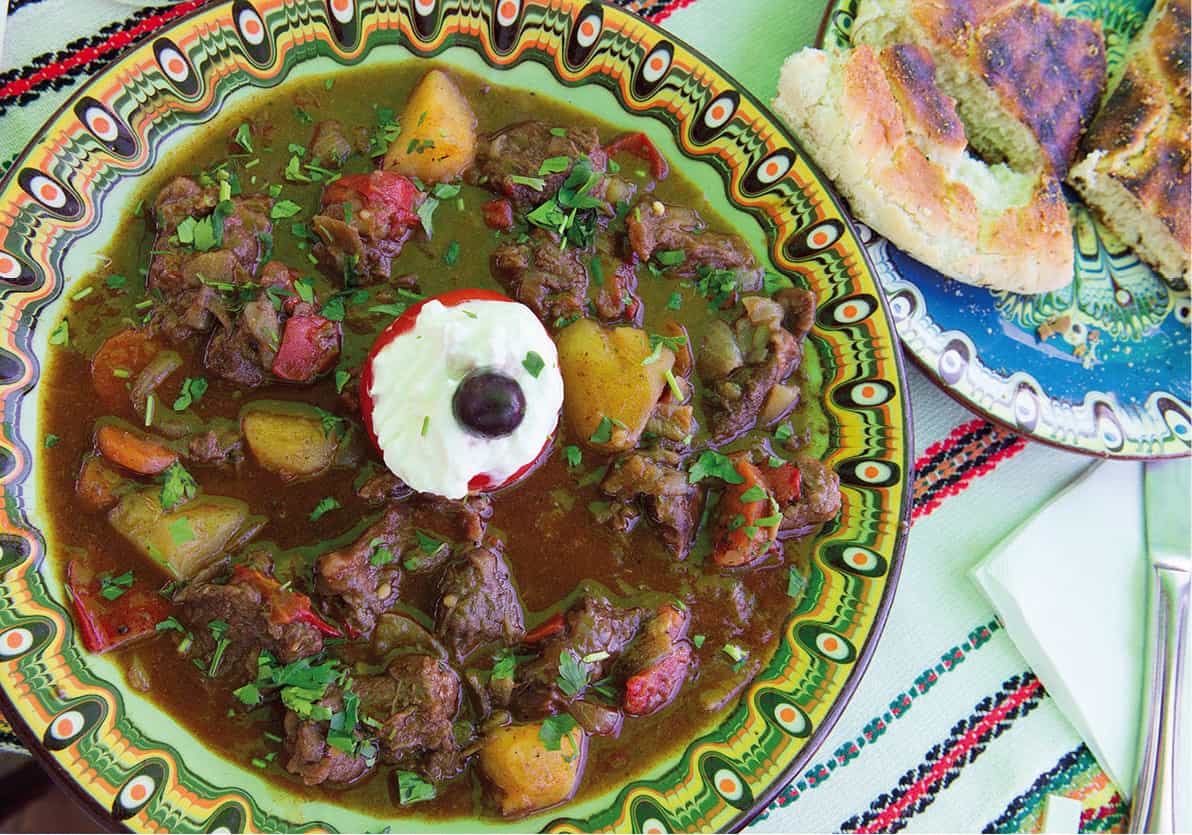
Kavarma (meat and vegetable stew)
Getty Images
You will find that Bulgarian desserts tend to consist of very sweet Turkish derivatives, such as baklava or revane. Halvitsa, a kind of nougat, is also popular, but it is rarely found in restaurants. Ice-cream sellers litter the country’s streets all summer long.
Side dishes
When eating out, especially in traditional Bulgarian restaurants, make sure you ask the waiter if the dish you have ordered will be accompanied by a garnitura (side dish). It is usual in this country to order and pay for everything separately, including bread.
Where to Eat
There are now a large number of Bulgarian restaurants, known as mehana, where traditional dishes are served, often accompanied by a folklore show of variable taste and quality. Choice is usually limited in these establishments, however, and you may often hear the phrase Za sezhalenie … svershi (We do not have…).
Though you should try Bulgaria’s main dishes, at some stage you may want something a little more familiar. The Black Sea coast is full of dubious establishments with such names as London Pub or Wembley Pride, all serving the standard English fried breakfast and roast beef lunches. Sofia has some fine international restaurants, including the now legendary Japanese restaurant at the Marinela Hotel. Chinese food is also popular among Bulgarians and you will find Chinese restaurants all over the country, even in the most remote towns. Finding a good Indian meal is impossible outside of Sofia.
Water choice
Bulgarian tap water is safe to drink, but the huge number of springs dotted throughout the country make bottled water so cheap that almost the entire population eschews the tap.
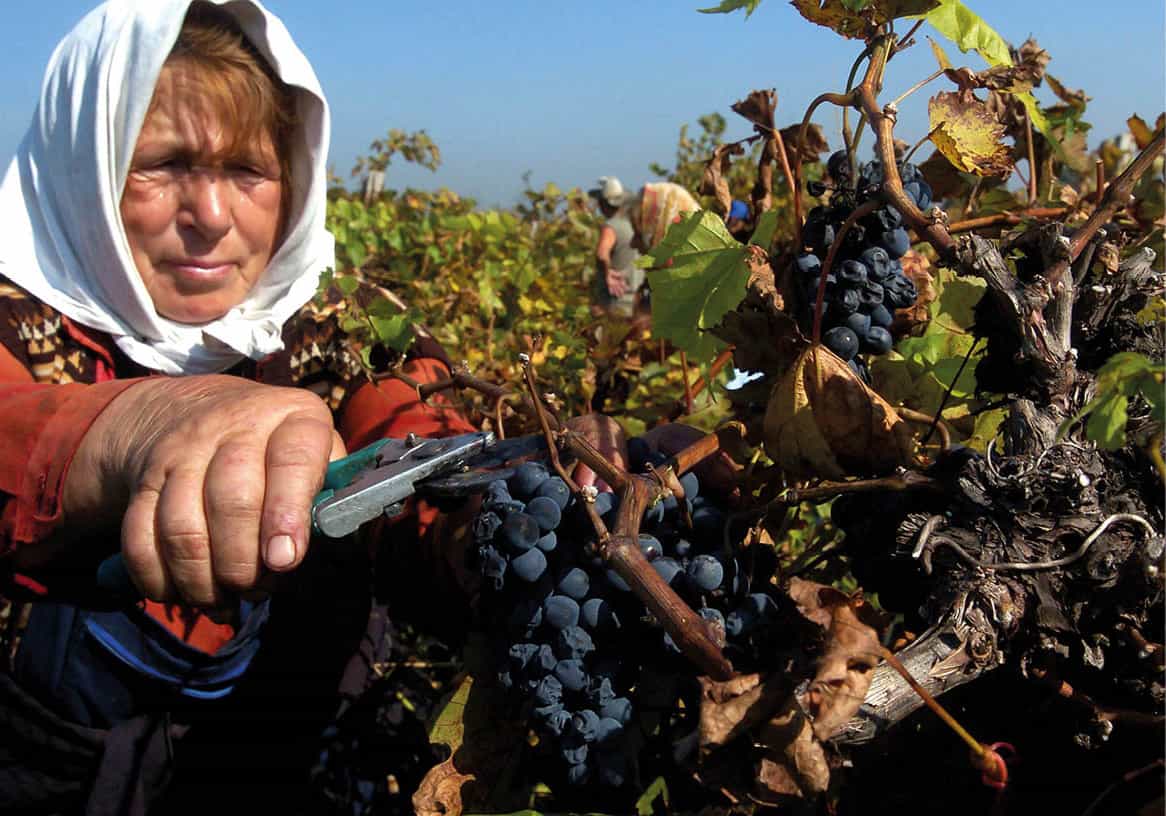
Harvesting grapes in Plovdiv
Shutterstock
What to Drink
Wine
Grape cultivation and wine production in Bulgaria dates back to antiquity. The Pomorie region has been known for wine since the Thracians planted the first vines around 1500 BC. Today grapes for wine are grown in most parts of the country and exported to Europe, the US, Japan and China. The state-owned vineyards have nearly all been privatised, and quality has rocketed, though to give the devil his due, the Communist state’s monopoly Vinprom invested heavily in Australian and American machinery and know-how in the 1970s and 1980s, which laid the foundation for the excellent wines produced today.
There are five main wine regions: Eastern, Northern, Sub-Balkan, Southern and South-Western. The best white wine tends to come from the Eastern region, as the warmth and moisture of the coastal air add fruitiness to the grapes. The leading labels of the region are Jambol and Stambolovo.
Red wines are the speciality of the Northern region and the vineyards around Ruse on the Danubian plain. Use of the noble Cabernet Sauvignon, which is especially suited to the cooler, damper soil and long warm autumns, is common, though local varieties of grape are also used. The leading wineries are those at Ruse, Suhindol and Ljaskovets.
The other regions are less noted, with a couple of exceptions. The Sungulare Misket and Sungulare Eau de Vie are whites of abundant flavour from the depths of the Balkan valleys, while perhaps the most famous Bulgarian wine, the fruity white Misket of the Valley of the Roses, is produced in the Sub-Balkan region. The most famous winery in the country is that in Assenovgrad, which produces the Mavrud and Gamza reds.
You will find a good selection of wines at all super-markets throughout the country, though there are also a number of specialist wine merchants in Sofia, Plovdiv, Rousse, Varna and Bourgas. Purchasing wine direct from a winery tends not to be any cheaper than doing so from ordinary shops, and you are likely to be limited to the wines bottled at the vineyard.
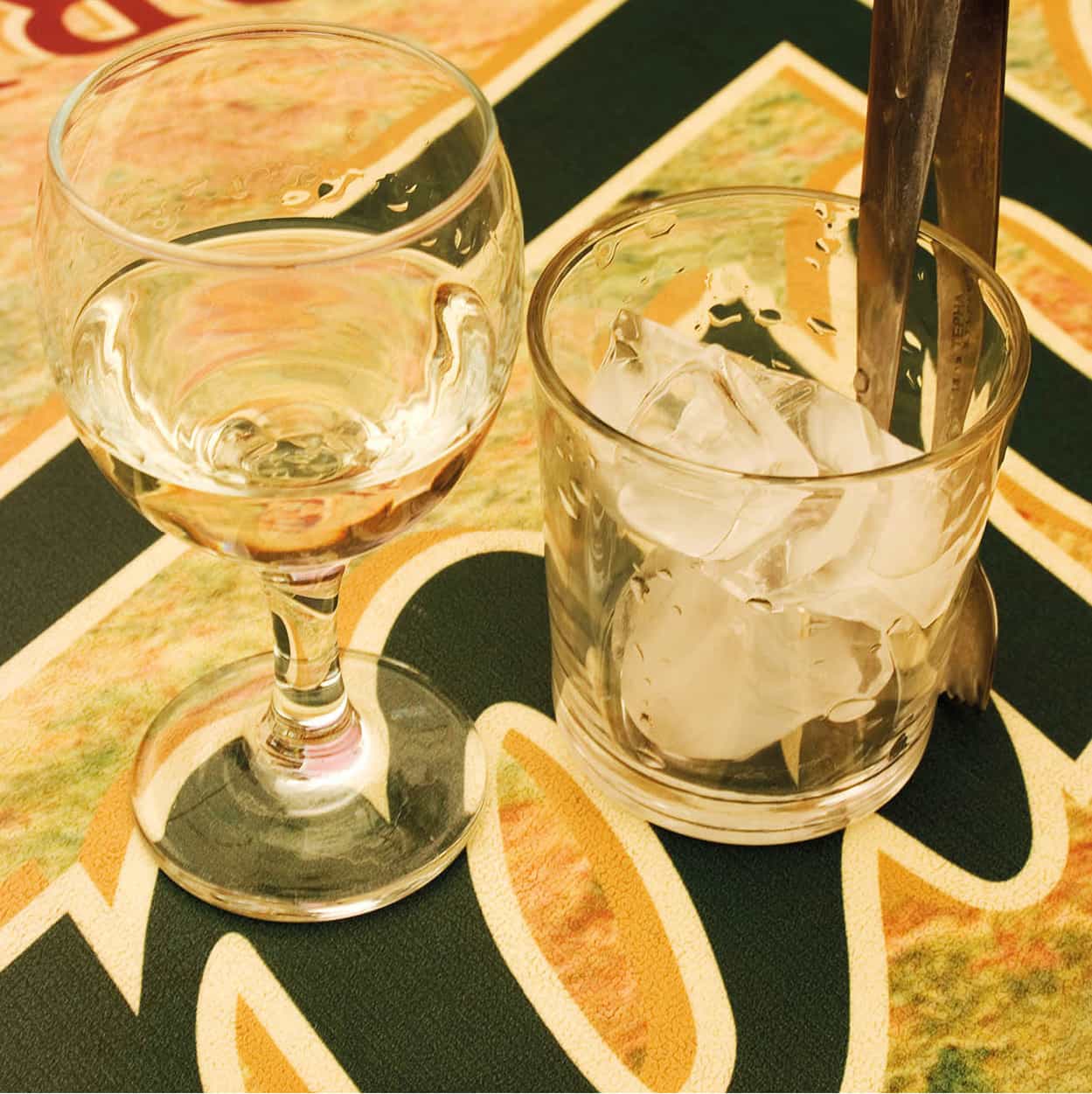
Rakia, a spirit made from prunes or grapes
Alamy
Spirits
The local spirit is rakia, made of prunes or grapes, often at home. You can buy rakia in supermarkets, but the homebrewed stuff is best. It is often drunk as an aperitif, and if you are invited to a Bulgarian home you will simply not be able to escape trying it. Do not resist; embrace its charms. The taste is something that can be acquired afterwards. Another popular local drink is boza, a thick, slightly alcoholic and rather sickly brown juice made from wheat, barley or switch grass.
Beer
This is produced in abundance and is much more popular with local people than wine. Most breweries are owned by major international companies and quality is always high. The leading local brands are Boliarka from Veliko Tarnovo, Astika from Haskovo and Zagorka from Stara Zagora. Boliarka also produces a bizarre stout called Stolichno. Beer is almost always bought in bottles, even in pubs, and pubs selling draught beers are rare, even in Sofia. Imported beers are widely available but expensive.